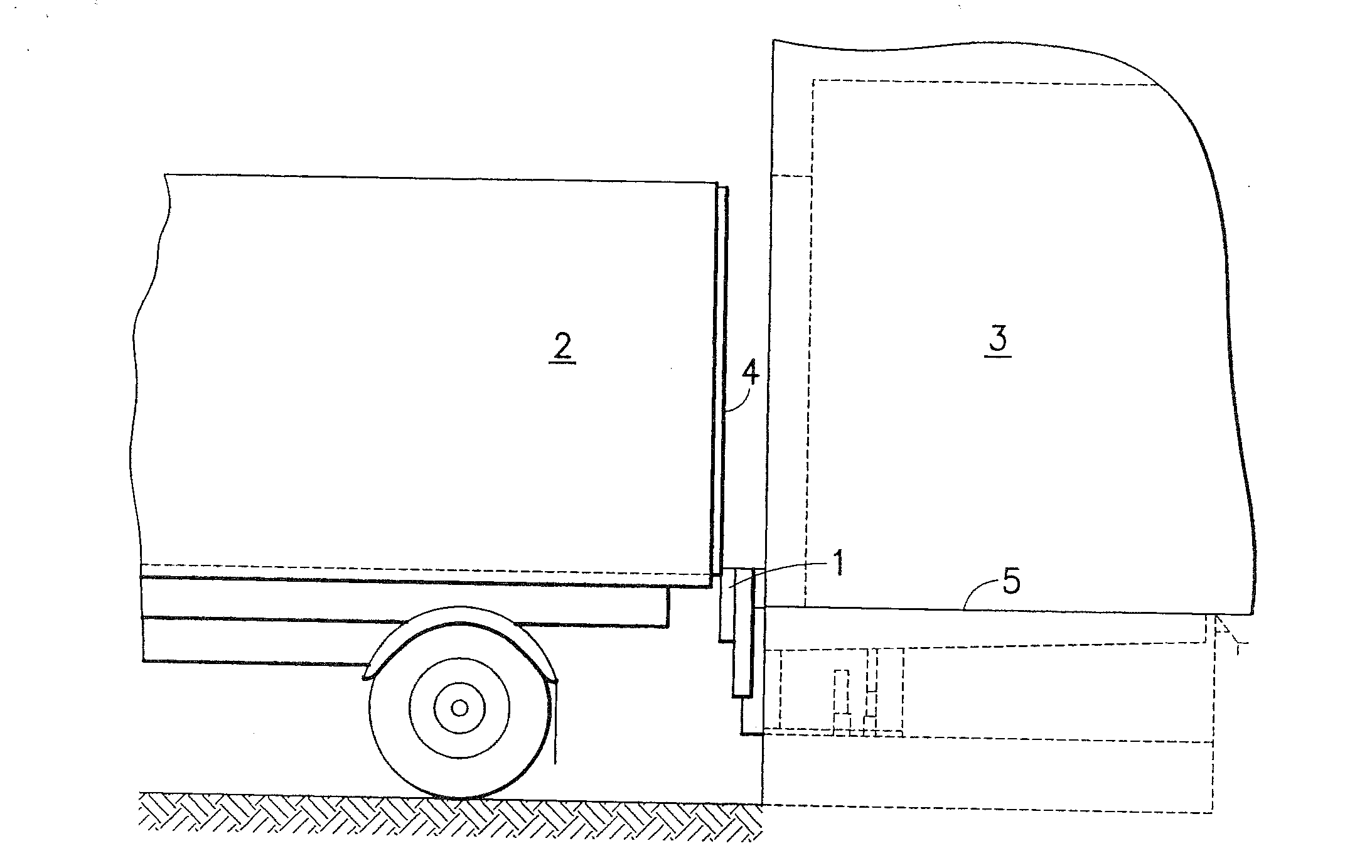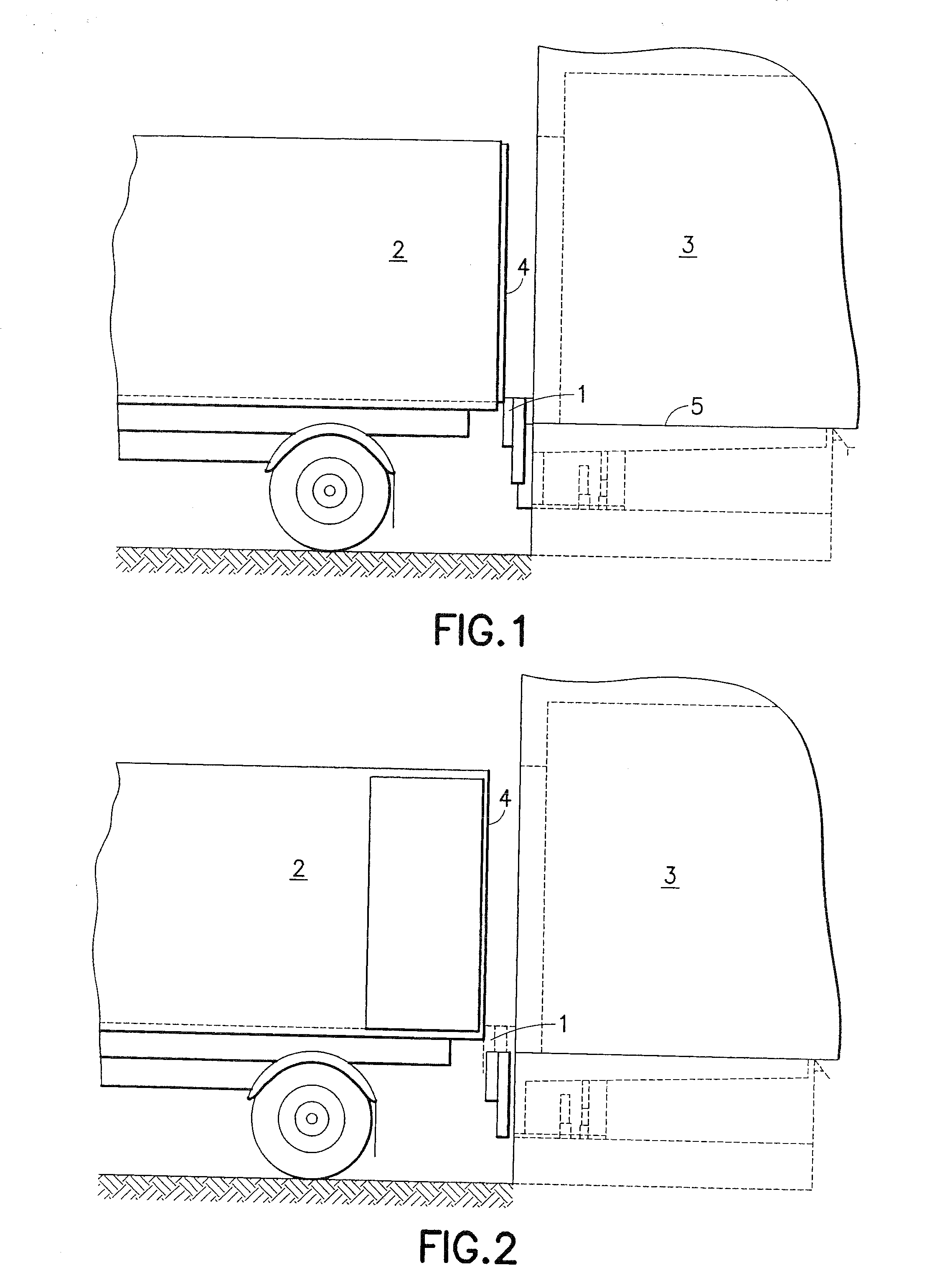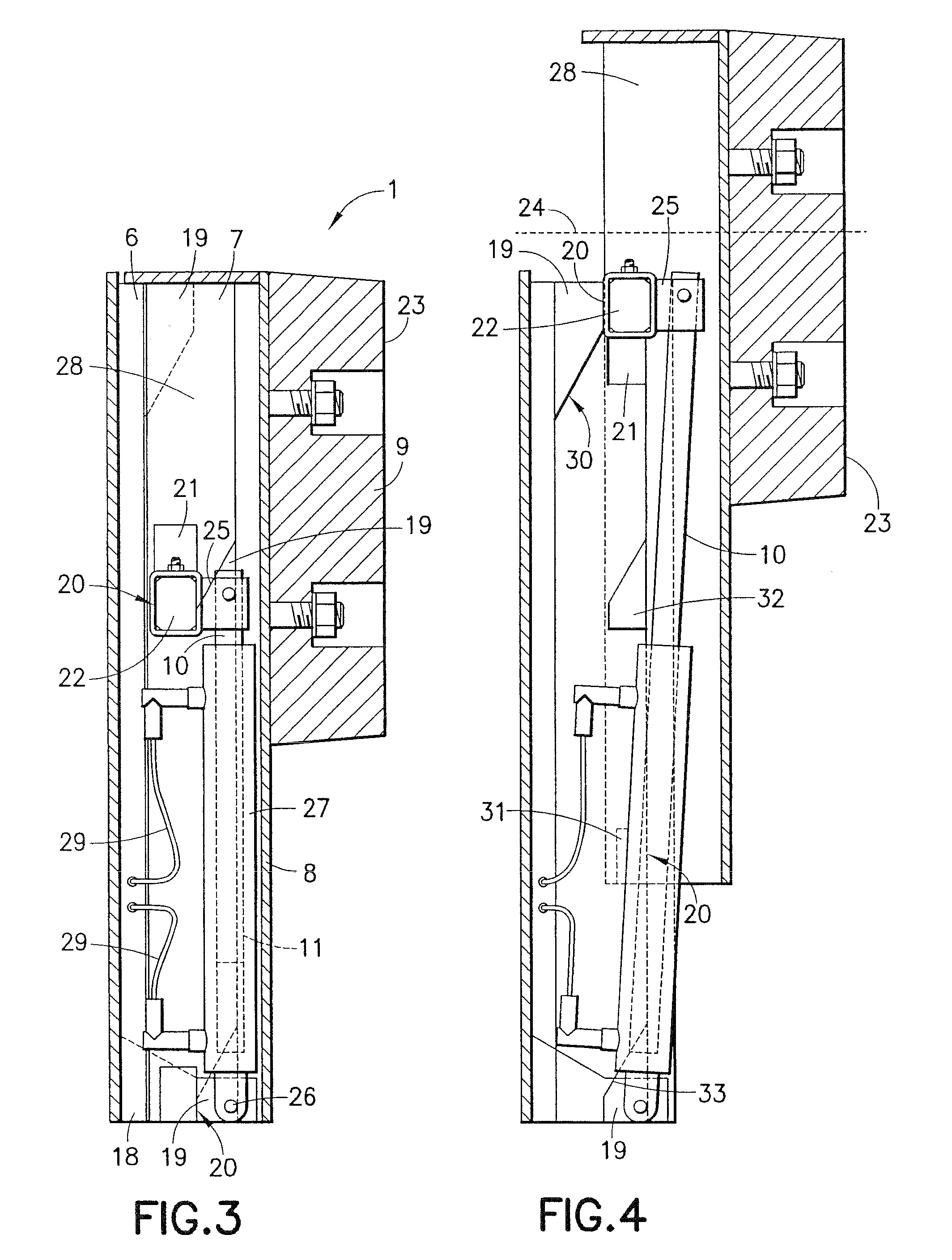Docking Buffer
a buffer and height adjustment technology, applied in the direction of loading/unloading, bridge applications, ways, etc., can solve the problems of not being able to adjust the buffer, affecting damage to the building door, building facade, or vehicle, etc., to achieve simple and robust design, enhance structural stability, and endanger the safe use of equipment
- Summary
- Abstract
- Description
- Claims
- Application Information
AI Technical Summary
Benefits of technology
Problems solved by technology
Method used
Image
Examples
Embodiment Construction
[0045]In FIGS. 1 and 2, 1 designates the docking buffer according to the invention, which is arrayed between a truck 2 and a building 3. FIG. 1 shows a situation in which the truck with closed doors 4 initially approaches docking buffer 1. In this process, the upper edge of the docking buffer is positioned so that it extends beyond the level of ramp edge 5. The docking buffer is thereby at a height that is sufficient to permit truck superstructures to be driven against the buffer. The buffer, however, obstructs opening of the doors 4. For this reason, the docking buffer is then moved out of the protective position according to FIG. 1 into the operating position shown in FIG. 2. In this position, the docking buffer no longer collides with the opening doors.
[0046]The design of the buffer according to the invention is shown in vertical section in FIG. 3. Docking buffer 1 essentially consists of a fixed assembly 6 and a movable assembly 7.
[0047]The movable assembly includes a buffer blo...
PUM
 Login to View More
Login to View More Abstract
Description
Claims
Application Information
 Login to View More
Login to View More - R&D
- Intellectual Property
- Life Sciences
- Materials
- Tech Scout
- Unparalleled Data Quality
- Higher Quality Content
- 60% Fewer Hallucinations
Browse by: Latest US Patents, China's latest patents, Technical Efficacy Thesaurus, Application Domain, Technology Topic, Popular Technical Reports.
© 2025 PatSnap. All rights reserved.Legal|Privacy policy|Modern Slavery Act Transparency Statement|Sitemap|About US| Contact US: help@patsnap.com



